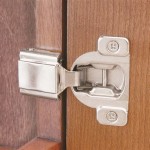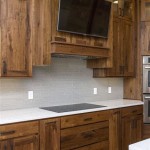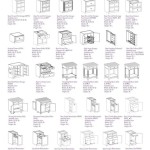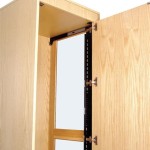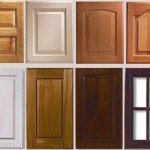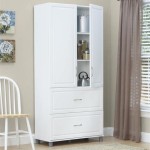How To Get Grease And Dirt Off Kitchen Cabinets
Kitchen cabinets are particularly susceptible to accumulating grease and dirt due to their proximity to cooking surfaces. Over time, airborne grease, food splatters, dust, and everyday grime can create a sticky, unsightly film that dulls the cabinet's finish. Regular cleaning is essential to maintain the appearance and longevity of kitchen cabinets. This article provides a comprehensive guide on effectively removing grease and dirt from kitchen cabinets while minimizing the risk of damage.
The frequency of cleaning depends on cooking habits and the level of ventilation in the kitchen. Individuals who cook frequently, especially those who engage in frying or sautéing, may need to clean their cabinets weekly or bi-weekly. For those who cook less often, a monthly cleaning schedule may suffice. Regardless of the frequency, it is always best to address spills and splatters promptly to prevent them from hardening and becoming more difficult to remove.
Understanding Cabinet Materials and Finishes
Before embarking on any cleaning endeavor, it is paramount to identify the material and finish of the kitchen cabinets. Common cabinet materials include wood (solid wood, plywood, and wood veneer), laminate, and metal. Finishes can range from painted surfaces, stained surfaces, varnished surfaces, to thermofoil or melamine coatings. Using the wrong cleaning method can damage the cabinet's finish, leading to discoloration, peeling, or other irreversible damage.
Solid wood cabinets, especially those with a natural wood finish, require gentle cleaning solutions and techniques to avoid damaging the grain and finish. Laminate cabinets are generally more durable and can withstand slightly stronger cleaning agents. Metal cabinets are highly resistant to most cleaning solutions, but it’s still important to avoid abrasive cleaners that could scratch the surface.
To determine the best approach, it is advisable to consult the manufacturer's instructions or perform a spot test in an inconspicuous area of the cabinet. This will help to ensure that the chosen cleaning method does not cause any adverse effects.
Gathering Essential Cleaning Supplies
Having the necessary cleaning supplies readily available will streamline the cleaning process. The following items are commonly used for cleaning kitchen cabinets:
- Mild Dish Soap: A gentle dish soap is effective for removing grease and grime without damaging the cabinet's finish.
- Warm Water: Warm water helps to loosen dirt and grease, making it easier to wipe away.
- Baking Soda: Baking soda is a mild abrasive that can be used to scrub away stubborn stains and grease buildup.
- White Vinegar: White vinegar is a natural degreaser and disinfectant.
- Microfiber Cloths: Microfiber cloths are soft, absorbent, and non-abrasive, making them ideal for cleaning delicate surfaces.
- Soft Sponge: A soft sponge can be used to apply cleaning solutions and scrub away dirt.
- Spray Bottle: A spray bottle is useful for applying cleaning solutions evenly.
- Old Toothbrush: An old toothbrush can be used to clean hard-to-reach areas, such as corners and crevices.
- Rubber Gloves: Rubber gloves protect hands from harsh chemicals and keep them clean.
- Protective Sheet or Towel: To protect the countertop and floor from drips, a protective sheet or towel can be employed.
Avoid using abrasive scrub brushes, scouring pads, or harsh chemicals, as these can scratch or damage the cabinet's finish. Always test any cleaning solution in an inconspicuous area before applying it to the entire cabinet surface.
Step-by-Step Cleaning Process
The following steps outline a general process for cleaning grease and dirt off kitchen cabinets. This method can be adapted based on the specific material and finish of the cabinets.
- Prepare the Cabinets: Remove all items from the countertops and clear the area around the cabinets. Place a protective sheet or towel on the countertop and floor to catch any drips.
- Dust the Cabinets: Use a dry microfiber cloth to dust the cabinets, removing any loose dirt, crumbs, or debris. This will prevent the dirt from being spread around when the cabinets are cleaned with a wet solution.
- Prepare the Cleaning Solution: In a bowl or spray bottle, mix a solution of warm water and a few drops of mild dish soap. Alternatively, create a solution of equal parts warm water and white vinegar. For particularly stubborn grease buildup, make a paste of baking soda and water.
- Apply the Cleaning Solution: Dip a soft sponge or microfiber cloth into the cleaning solution and wring out any excess liquid. Gently wipe down the cabinets, starting from the top and working your way down. For hard-to-reach areas, use an old toothbrush to scrub away dirt and grime. If using a spray bottle, spray the cleaning solution onto the cabinets and wipe it off with a microfiber cloth.
- Scrub Stubborn Stains: For stubborn stains, apply a small amount of baking soda paste to the affected area and gently scrub with a soft sponge or microfiber cloth. Rinse the area with clean water and dry with a clean cloth. Avoid scrubbing too hard, as this can damage the cabinet's finish.
- Rinse the Cabinets: After cleaning the cabinets with the soapy solution, rinse them with a clean, damp microfiber cloth to remove any remaining soap residue. Be sure to wring out the cloth thoroughly to avoid over-wetting the cabinets.
- Dry the Cabinets: Use a clean, dry microfiber cloth to dry the cabinets completely. This will prevent water spots and streaks from forming.
- Clean Hardware: Remove cabinet hardware, such as knobs and pulls, and soak them in a solution of warm water and dish soap. Use a soft brush or cloth to scrub away any dirt or grime. Rinse the hardware with clean water and dry with a clean cloth before reattaching it to the cabinets.
For laminate cabinets, a slightly stronger cleaning solution may be used. A mixture of warm water and a small amount of all-purpose cleaner can be effective for removing grease and dirt. Always test the cleaning solution in an inconspicuous area before applying it to the entire cabinet surface.
For metal cabinets, a solution of warm water and dish soap is usually sufficient. Avoid using abrasive cleaners, as these can scratch the surface. A microfiber cloth or soft sponge can be used to clean the cabinets. Rinse with clean water and dry with a clean cloth.
Addressing Specific Types of Stains
Certain types of stains may require specific cleaning solutions and techniques. Here are some tips for addressing common types of stains on kitchen cabinets:
- Grease Splatters: For fresh grease splatters, blot the area with a clean paper towel to absorb as much grease as possible. Then, clean the area with a solution of warm water and dish soap. For dried grease splatters, apply a paste of baking soda and water and let it sit for a few minutes before scrubbing gently.
- Food Stains: For food stains, such as ketchup, mustard, or sauce, wipe the area immediately with a damp cloth. If the stain persists, try using a solution of warm water and vinegar. For stubborn food stains, apply a small amount of hydrogen peroxide to the affected area and let it sit for a few minutes before wiping it away.
- Water Stains: Water stains can often be removed by gently rubbing the area with a soft cloth dampened with mayonnaise. Let the mayonnaise sit for a few minutes before wiping it away with a clean cloth.
- Mold and Mildew: Mold and mildew can grow on kitchen cabinets, especially in humid environments. To remove mold and mildew, mix a solution of equal parts water and bleach. Apply the solution to the affected area and let it sit for a few minutes. Scrub the area with a soft brush or sponge and rinse with clean water. Be sure to wear gloves and eye protection when using bleach. Ensure proper ventilation while cleaning with bleach.
Always test any cleaning solution in an inconspicuous area before applying it to the entire cabinet surface. It is also important to follow the manufacturer's instructions for cleaning specific types of stains.
The implementation of preventative measures can significantly reduce the frequency of cleaning. Using the range hood while cooking, promptly wiping up spills and splatters, and keeping the kitchen well-ventilated are all effective strategies for keeping cabinets clean. Regular dusting with a microfiber cloth further prevents the buildup of grime.

How To Clean Kitchen Cabinets Everyday Skate

How To Clean Grimy Kitchen Cabinets With 2 Ingredients

How To Clean Sticky Grease Off Kitchen Cabinets Ovenclean

How To Remove Grease From Kitchen Cabinets 3 Methods Bob Vila

Clean Kitchen Cabinets Off With These Tips And Hints

3 Ways To Clean Greasy Kitchen Cabinets Wikihow

Degrease Kitchen Cabinets With An All Natural Homemade Cleaner

How To Clean Sticky Grease Off Kitchen Cabinets

How To Clean White Kitchen Cabinets 3 Best Ways Avoid Abbotts At Home

How To Deep Clean Kitchen Cabinets And Keep Them Looking Gorgeous Everyday Skate
Related Posts

